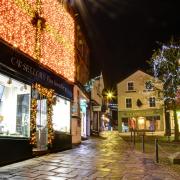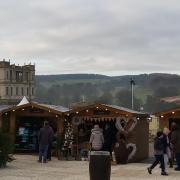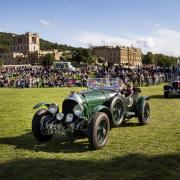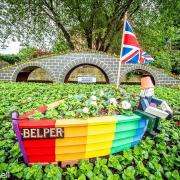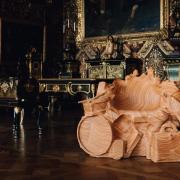Out and about with Roly Smith
The earliest tourists to visit the Peak District often followed a well-trodden Grand Tour, based on the so-called ‘Seven Wonders of the Peak’. These were natural and man-made attractions used by the earliest visitors to echo the fabled Seven Wonders of the Ancient World.
This pioneering listing was largely responsible for putting the Peak on the tourist map, and the Wonders soon became a fashionable itinerary, like the Grand Tours of Europe then being taken by the well-to-do.
The first listing of the legendary Wonders of the Peak appears to have been made by William Camden, the 16th century antiquarian and historian, in his Britannia, a history of Britain published in 1586. In fact he described nine ‘wonders’, but appears to have dismissed all but three as deserving of the name:
Nine things that please us at the Peak we see;
A Cave, a Den, a Hole, the Wonder be.
The cave was Peak Cavern (then and again more recently known as the Devil’s Arse) at Castleton; the den was Poole’s Cavern, home of the medieval outlaw Poole at Buxton, and the hole was the gaping open pothole of Eldon Hole, on the slopes of Eldon Hill near Peak Forest.
The first writer to list the classic seven Wonders was the Warwickshire-born poet Michael Drayton, in his Poly-Olbion, published in 1622. Drayton added Sandi Hill (Mam Tor, the so-called Shivering Mountain near Castleton); the medieval Royal Forest of the Peak, and the Ebbing and Flowing Well (at Tideswell, or possibly Barmoor Clough) to Camden’s Peak Cavern at Castleton; Chatsworth; possibly Peveril Castle at Castleton, and St Ann’s Well at Buxton.
The first real tourist guidebook to the Peak was written by Thomas Hobbes, the famous philosopher and tutor to the Cavendish children at Chatsworth. His De Mirabilibus Pecci: Concerning the Wonders of the Peak in Darby-shire was first published in long-winded Latin verse in 1636, and in it he listed seven ‘wonders’ which he had visited during a two-day ride. He described how:
Of the High Peak are seven wonders writ,
Two fonts, two caves, one palace, mount and pit.
Hobbes’s Wonders were two fountains (St Ann’s Well in Buxton and the Ebbing and Flowing Well); two caves (Poole’s Cavern and Peak Cavern); a palace (Chatsworth); a mountain (Mam Tor), and a pit (Eldon Hole).
The wonders were written in English for the first time in 1682 by Charles Cotton, the impecunious squire of Beresford Hall in Dovedale, co-author with Izaak Walton of the anglers’ bible, The Compleat Angler.
Daniel Defoe, the satirical journalist and political commentator best known for his novel Robinson Crusoe, toured the Peak in the early 18th century. But he cynically debunked Hobbes’ and Cotton’s ‘Wonders’, concluding that only Eldon Hole and Chatsworth – ‘one a wonder of nature, the other of art’ – were worthy of the name.
Modern wonders might include such features such as Kinder Downfall, Lud’s Church and Arbor Low and The Millennium Walkway at New Mills. What do you think?
Roly Smith’s AA Leisure Guide to the Peak District is due to be published in the spring.










